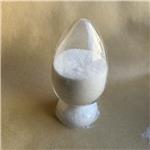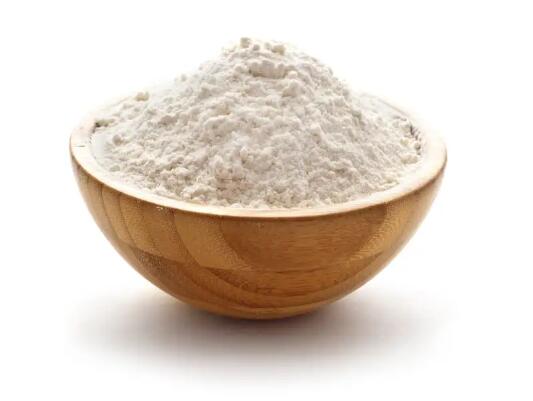Zinc Pyrithione: Clinical Applications in Triple-Negative Breast Cancer and Environmental Hazards
General Description
Zinc pyrithione is a versatile compound with diverse applications. Initially developed to combat scalp fungus, it is now FDA-approved for treating conditions like psoriasis and UV radiation-induced epidermal hyperplasia. Recent studies have highlighted its potential in cancer treatment, particularly in triple-negative breast cancer (TNBC), where it disrupts copper homeostasis to induce cell death via cuproptosis. However, Zinc pyrithione poses environmental hazards, especially to aquatic ecosystems, necessitating a shift towards safer alternatives like pyrithione zinc ethanolamine salt and natural compounds. While Zinc pyrithione shows promise in medical applications, its environmental impact underscores the importance of transitioning to eco-friendly alternatives to mitigate harm to aquatic life and preserve ecosystems. Further research and clinical trials are essential to validate Zinc pyrithione's efficacy and safety in TNBC treatment, emphasizing the need for a balanced approach considering both its therapeutic potential and environmental implications.

Figure 1. Zinc pyrithione
Overview
Zinc pyrithione is a compound initially developed to combat the scalp fungus Malassezia, a common cause of dandruff. With approval from the US Food and Drug Administration (FDA), Zinc pyrithione is now recognized as a topical antimicrobial agent for treating conditions like psoriasis and UV radiation-induced epidermal hyperplasia. ZnPT demonstrates zinc ionophore properties, which can increase intracellular zinc levels in yeast, leading to cellular stress through mismetallation. Additionally, it functions as a copper ionophore, promoting copper influx and inactivating iron-sulfur proteins, effectively hindering fungal growth. Exposure to Zinc pyrithione can result in mitochondrial dysfunction, ATP depletion, and membrane depolarization. Given its extensive antimicrobial capabilities and established safety profile, recent research has highlighted the potential of Zinc pyrithione in cancer treatment. Its ability to induce cellular stress, inhibit fungal growth, and disrupt cellular functions make Zinc pyrithione a promising candidate for therapeutic interventions beyond its original scope in dermatological conditions. The multifaceted mechanisms of action of Zinc pyrithione underscore its versatility and potential for further exploration in medical research and treatment strategies. 1
Clinical Applications in Triple-Negative Breast Cancer
Zinc pyrithione emerges as a promising candidate in the clinical application for triple-negative breast cancer (TNBC). TNBC, known for its aggressive nature, lacks targeted therapies, making treatment challenging. Recent research highlights the role of metal ion-induced cell death pathways, including cuproptosis, dependent on copper ions, as potential targets for cancer therapy. In a study, Zinc pyrithione from the FDA-approved drug library exhibited significant inhibition of TNBC progression. RNA sequencing elucidated Zinc pyrithione's disruption of copper homeostasis, a crucial aspect of cuproptosis. Moreover, Zinc pyrithione promoted the oligomerization of dihydrolipoamide S-acetyltransferase, a key molecule in the cuproptosis pathway. Clinically, elevated expression levels of cuproptosis-related proteins correlated with poor prognosis in TNBC patients, emphasizing the significance of cuproptosis in disease progression. By targeting and disrupting copper homeostasis, Zinc pyrithione induces cell death, providing a potential avenue for therapeutic intervention in TNBC. These findings underscore Zinc pyrithione's potential in TNBC treatment by exploiting cuproptosis as a therapeutic target. Further research into ZnPT's mechanisms and clinical trials are warranted to validate its efficacy and safety in TNBC patients. Zinc pyrithione holds promise as a novel approach in combating TNBC, addressing the unmet medical need in this challenging cancer subtype. 2
Environmental Hazards
Zinc pyrithione presents notable hazards to environmental ecosystems, particularly aquatic life. Upon rinsing, Zinc pyrithione readily infiltrates water bodies, notably in regions lacking robust water treatment infrastructure, posing significant threats to aquatic habitats. Given its prevalent use in hair care products, the ecological ramifications of Zinc pyrithione cannot be understated. Furthermore, viable substitutes exist, such as pyrithione zinc ethanolamine salt and natural compounds like cinnamon and cloves, offering comparable efficacy in dandruff control while boasting lower toxicity and heightened eco-friendliness. Hence, transitioning away from Zinc pyrithione towards safer alternatives is imperative to curtail its adverse environmental impacts and preserve ecosystems. 3
Reference
1. Schwartz JR. Zinc Pyrithione: A Topical Antimicrobial With Complex Pharmaceutics. J Drugs Dermatol. 2016; 15(2): 140-144.
2. Yang X, Deng L, Diao X, et al. Targeting cuproptosis by zinc pyrithione in triple-negative breast cancer. iScience. 2023; 26(11): 108218.
3. Pyrithione Zinc. National Center for Biotechnology Information. 2024; PubChem Compound Summary for CID 26041.
);Related articles And Qustion
Lastest Price from Zinc pyrithione manufacturers

US $0.00/Kg/Drum2024-09-19
- CAS:
- 13463-41-7
- Min. Order:
- 100g
- Purity:
- 99%
- Supply Ability:
- 1000mt

US $0.00/KG2024-09-19
- CAS:
- 13463-41-7
- Min. Order:
- 1KG
- Purity:
- 99.8%
- Supply Ability:
- 100tons





